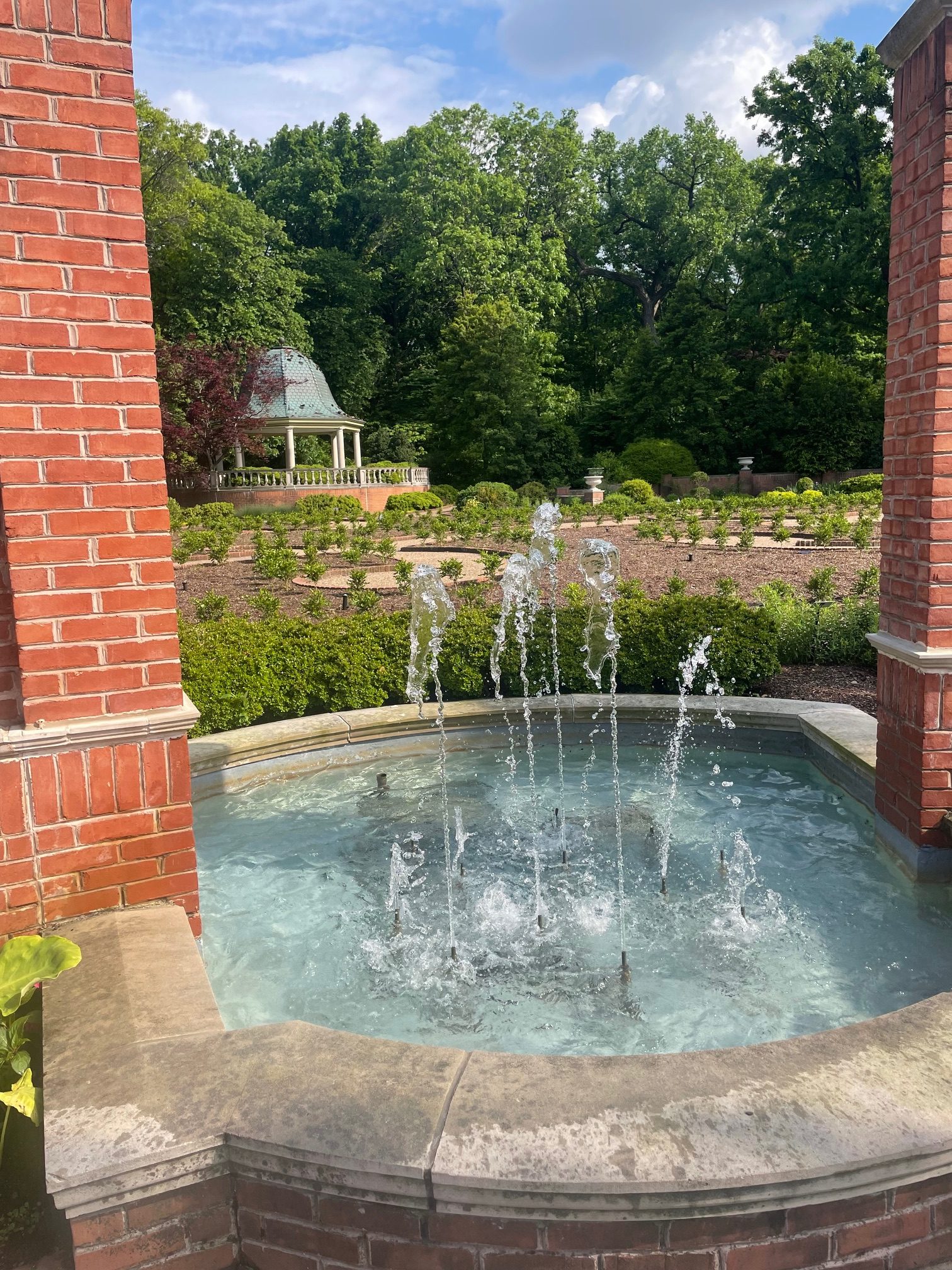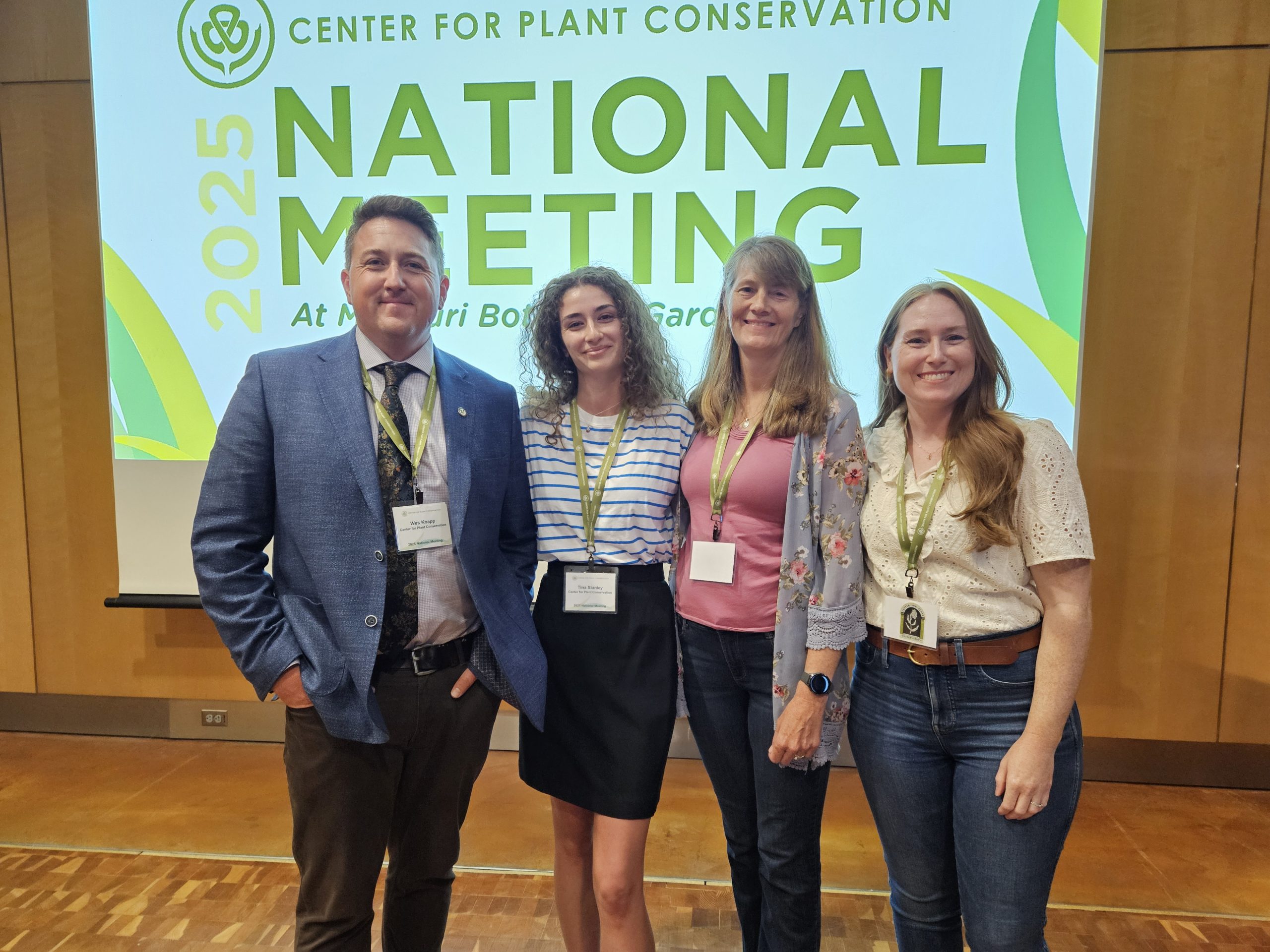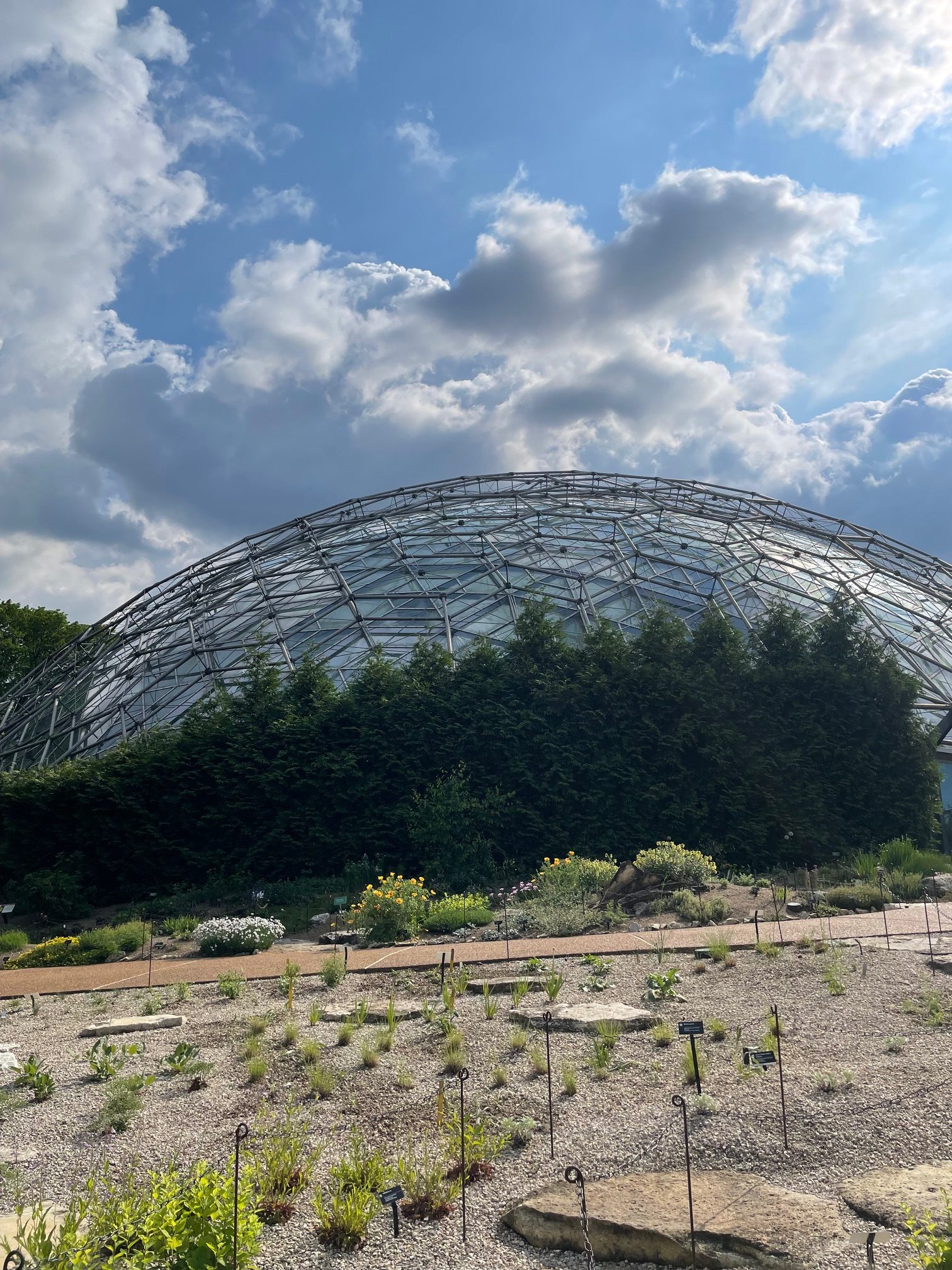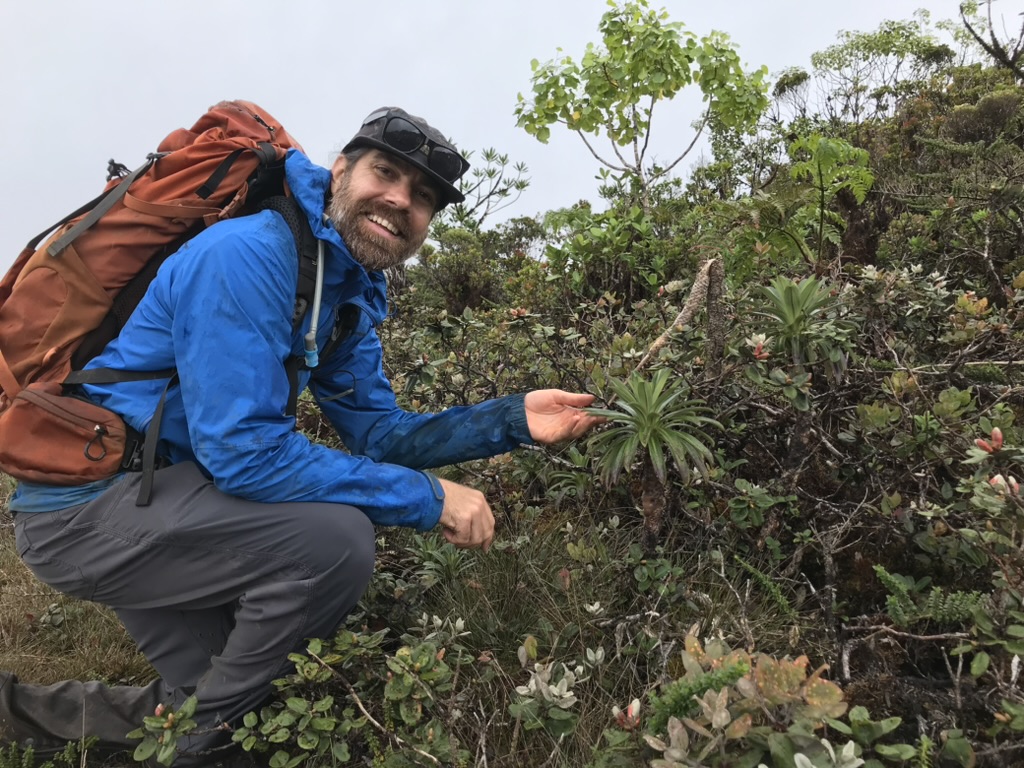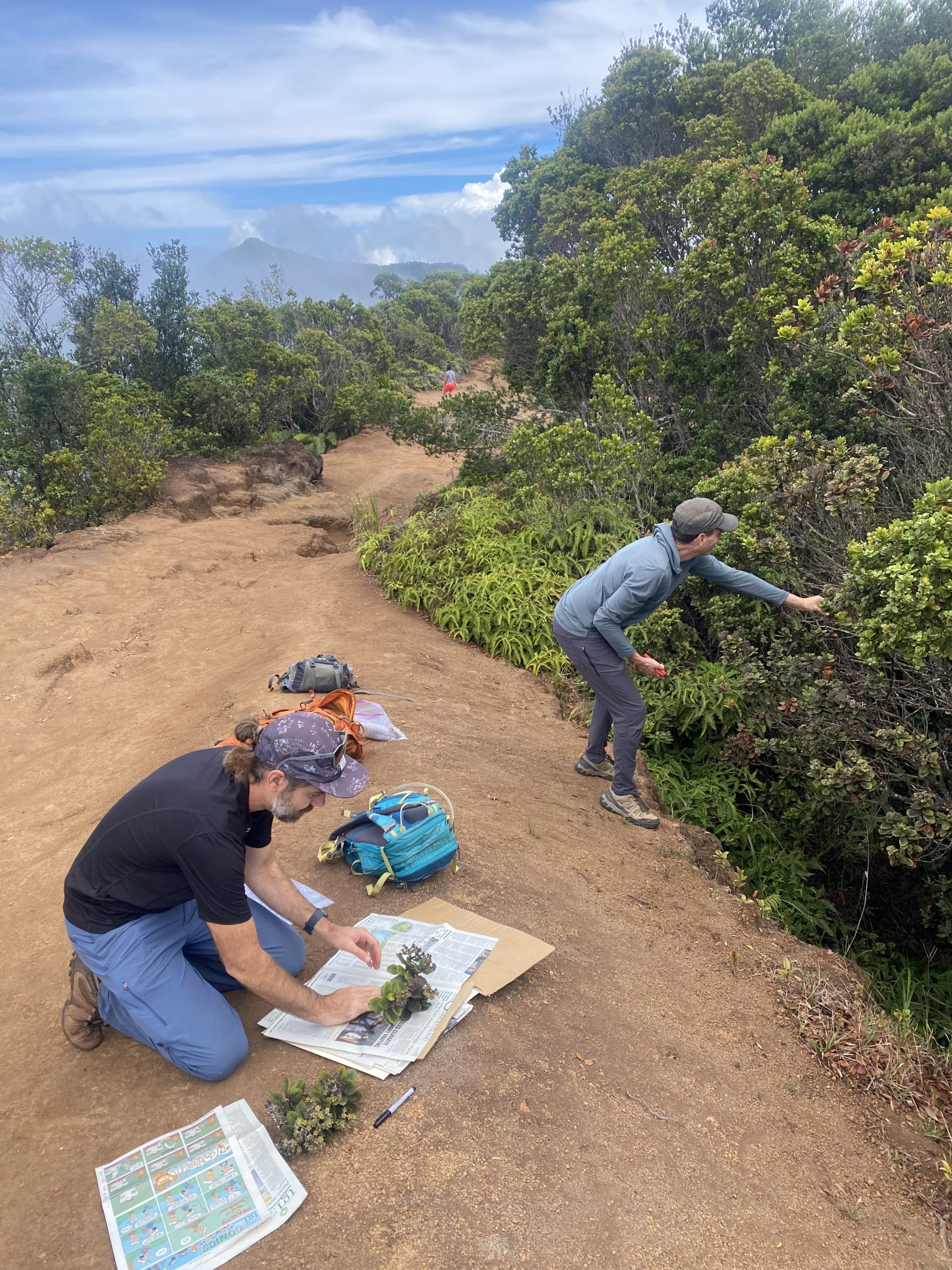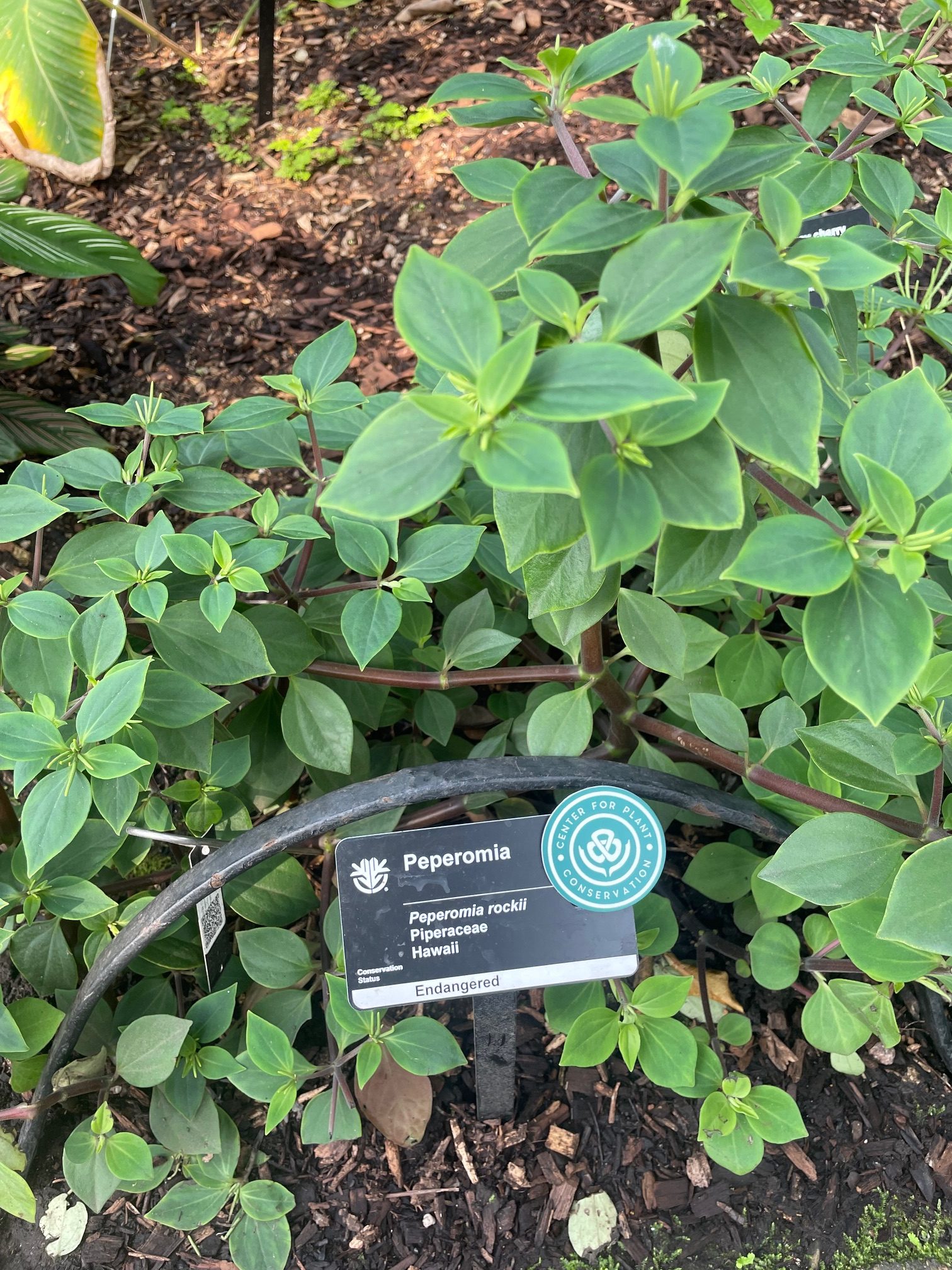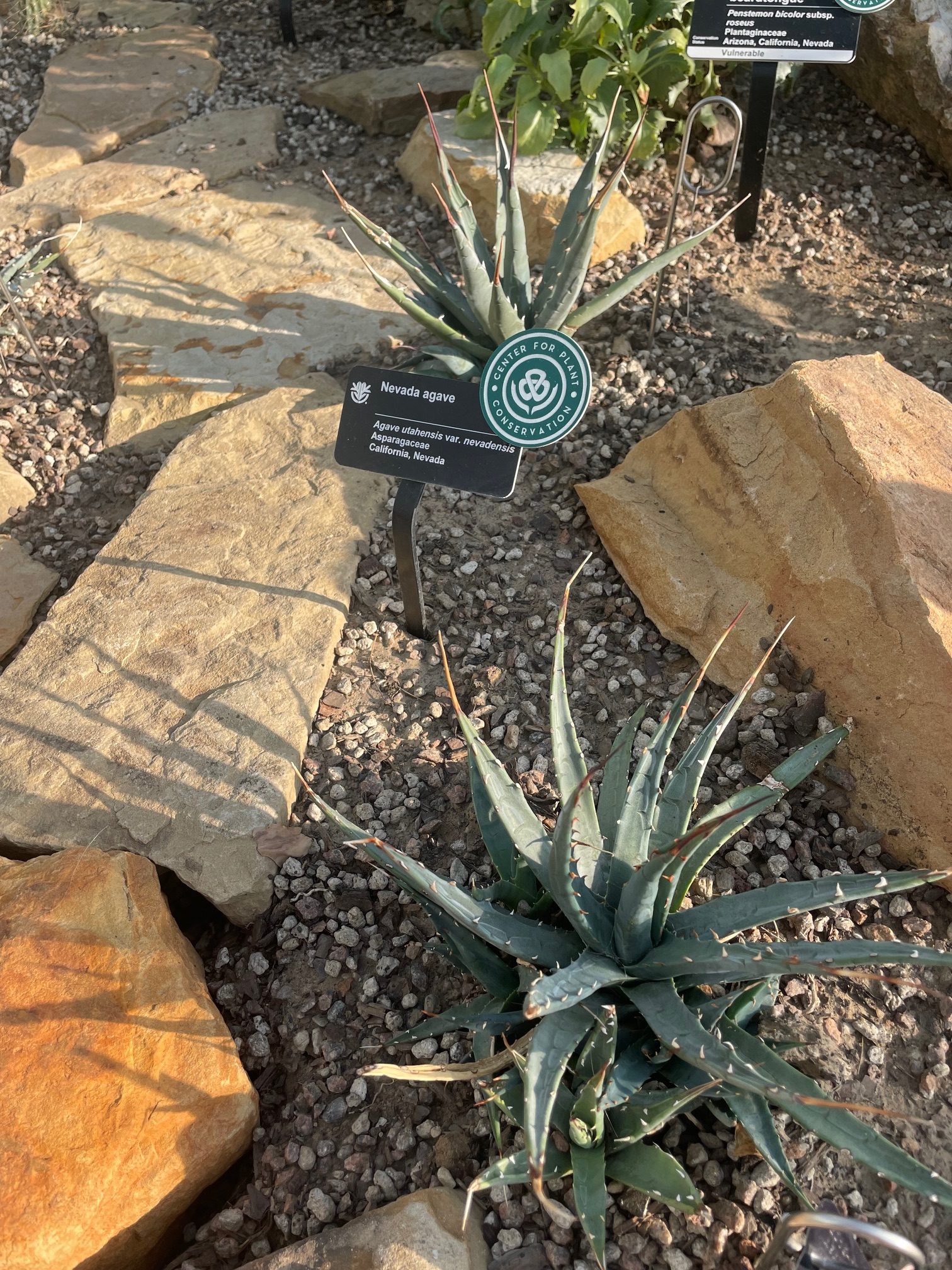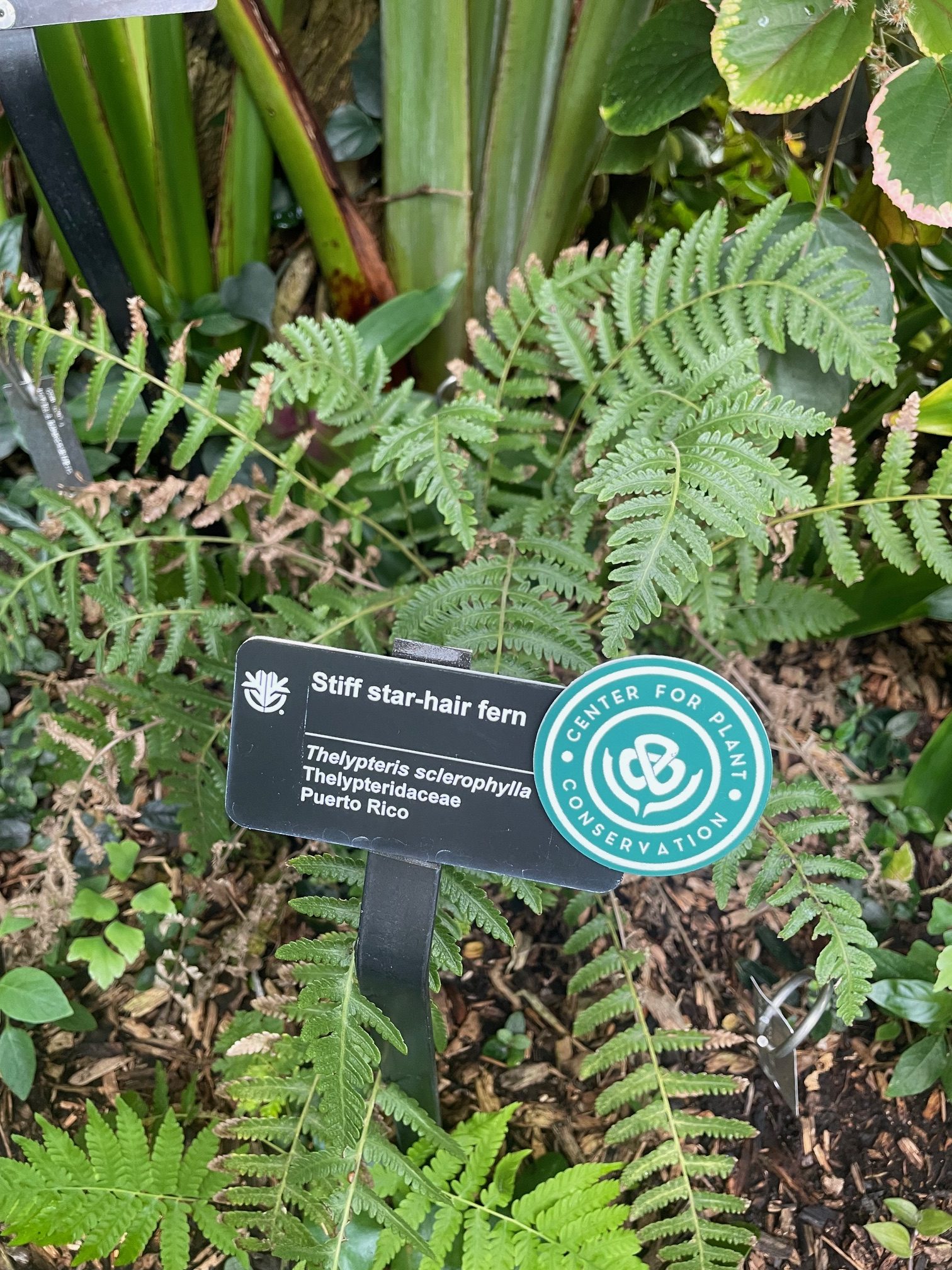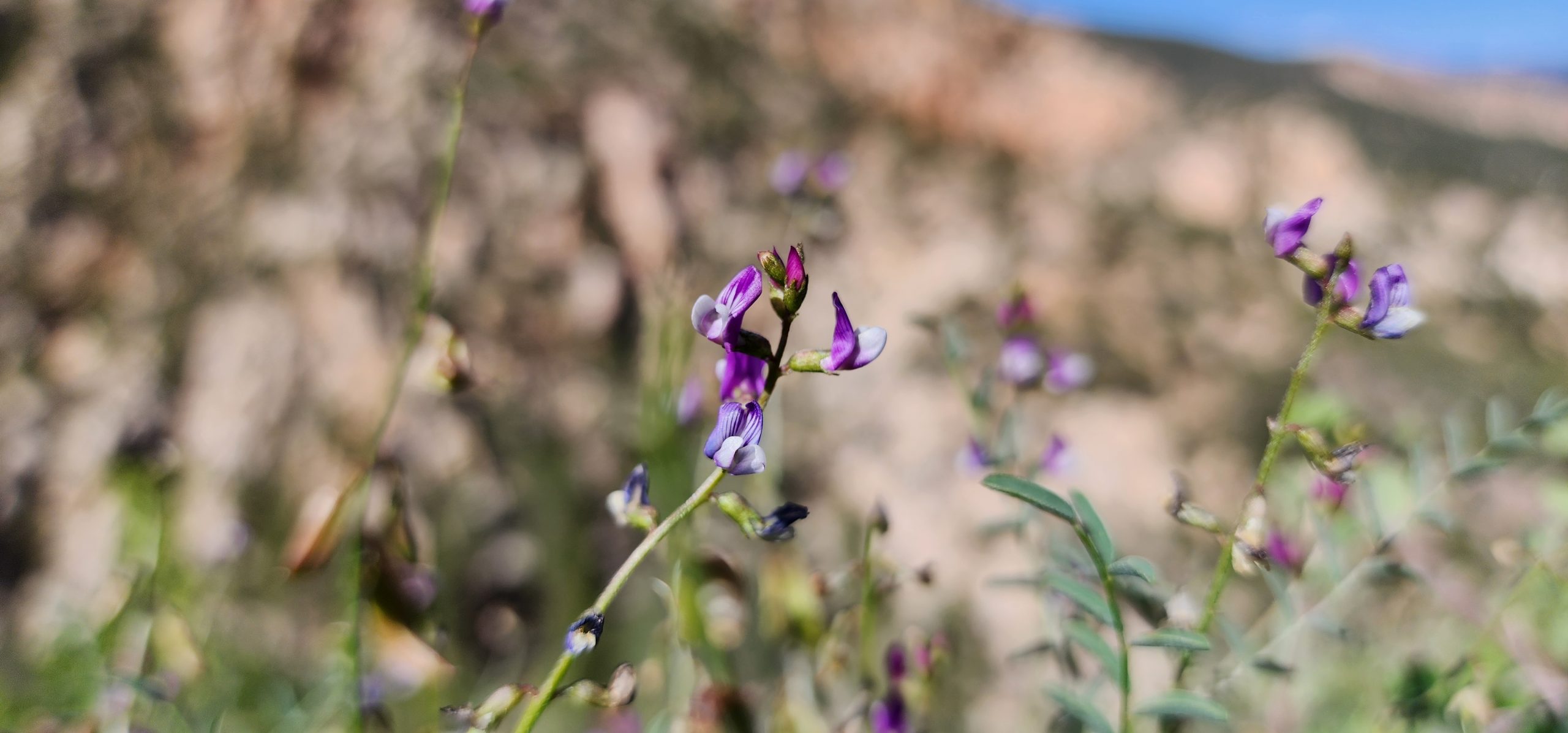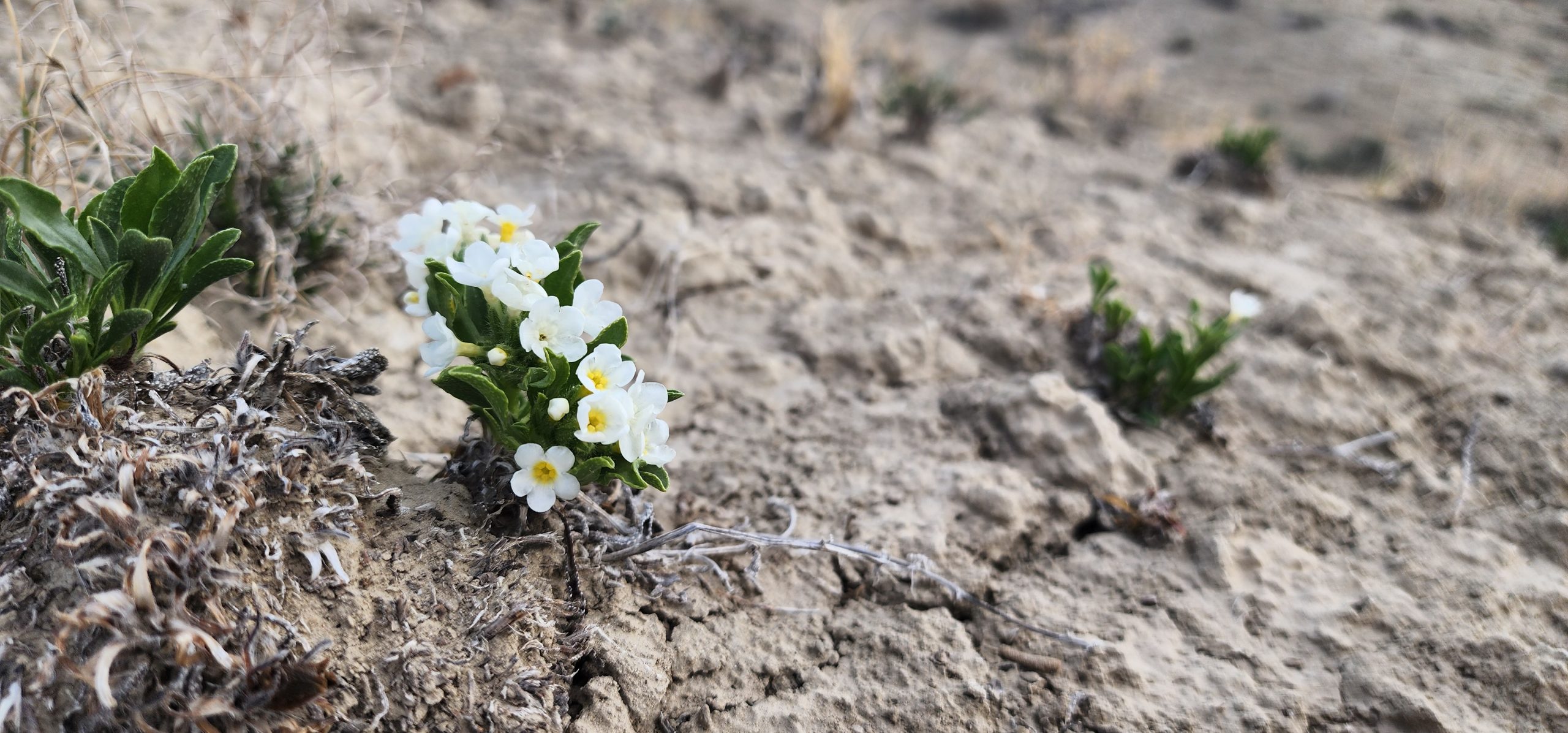SAVE PLANTS
Center for Plant Conservation
In early May, the Center for Plant Conservation’s (CPC) 2025 National Meeting brought together more than 160 plant conservation professionals, researchers, and advocates at the beautiful Missouri Botanical Garden in St. Louis, Missouri. With attendees representing over 65 organizations from across the United States and abroad, the meeting offered an energizing and inspiring space for sharing knowledge, advancing new ideas, and strengthening our collective efforts to save rare and endangered plants from extinction.
This year’s meeting centered around the theme Best Practices: Proven Methods & New Perspectives in Rare Plant Conservation, highlighting the tried-and-true methodologies and emerging approaches that drive successful conservation efforts. Over the course of two days, participants explored the latest strategies in plant conservation and stewardship—from innovative seed banking strategies and community engagement initiatives to new research methods and success stories in rare plant recovery. With 40 oral presentations and 12 poster presentations, the program showcased the depth and breadth of work taking place across the CPC network.
We extend our heartfelt thanks to the Missouri Botanical Garden for hosting this year’s event and to all who joined us in St. Louis. The connections made, insights shared, and momentum generated during our time together remind us that by working in partnership, we can make a lasting difference for imperiled plants and the ecosystems they support.
With gratitude,
The CPC National Office Team
Leadership, Legacy, and Looking Ahead: Highlights from the CPC National Office
At the 2025 National Meeting, CPC staff presented the latest happenings underway at the National Office. CEO Dr. Wes Knapp delivered a presentation sharing stories from his botanical career and reinforcing CPC’s mission to prevent plant extinction. Complemented by strategic updates from Director of Communications and Public Programs Shannon Fowler and Conservation Program Manager Tina Stanley, the CPC Science and Programs session offered an energizing look at both the people and the programs driving CPC’s impact forward.
A Career Rooted in Purpose
In his presentation, CEO Dr. Wes Knapp shared a personal and powerful narrative tracing his path from early field botanist to national conservation leader. His journey began in Maryland’s Eastern Shore, where he was tasked with identifying rare plant habitats—a role that shaped his passion for protecting imperiled species and deepened his respect for the complexity of botanical systems.
A formative experience came with Nutall’s mugwort (Micranthemum micranthemoides)—the only extinct plant in the Maryland flora. Though small and cryptic, the species had an outsized influence on Knapp’s career. “It’s the opposite of charismatic megafauna,” he joked. “But it rooted my interest in extinction and preventing it.”
Knapp spoke passionately about the role of taxonomy as the foundation for conservation, especially for rare and overlooked species. “You can’t conserve what you can’t correctly identify,” he noted, highlighting a field experience where he and a colleague rediscovered a distinct Juncus species that had been taxonomically lumped under a more common one. This story illustrated how taxonomic clarity can lead to better protection for species teetering on the edge of recognition—and survival.
Importantly, Knapp also called attention to the convergence of ex situ and in situ conservation work, noting that long-term plant protection requires both strategies to work in tandem. Fieldwork, research, seed banking, and public policy are not isolated endeavors, he explained—they are parts of a larger, interdependent system. “The best conservation outcomes come when these efforts inform and strengthen each other,” he emphasized.
His talk closed with a reflection on the human side of conservation: the mentors who guided him, the colleagues who challenged him, and the CPC network that has long inspired him. “We’re not just conserving species,” he said. “We’re conserving knowledge, relationships, and hope for the future.”

Network Growth & Strategic Expansion
Director of Communications and Public Programs Shannon Fowler shared impressive growth statistics for the CPC Network of Conservation Partners. From just 14 institutions at its founding in 1984, CPC now includes 82 partners spanning 30 U.S. states and territories as well as international partners based in Canada, the U.K., and Australia.
Since the last National Meeting in May 2024, CPC has welcomed three new partners:
-
Santa Fe Botanical Garden
-
University of Florida’s Department of Environmental Horticulture
-
Jacksonville Zoo and Gardens
This expansion is part of a deliberate strategy to fill geographic gaps (such as the Intermountain West) and pursue mission-aligned partnerships that strengthen conservation impact.
Listening and Learning from the CPC Network
To support this growth and keep communication flowing, CPC launched a new annual survey to gather input from both institutional and individual partners. “The goal,” Fowler explained, “is to implement a feedback mechanism where we can hear about our partners’ needs and priorities—and evolve our resources accordingly.” Survey respondents will help shape CPC’s programming, identify collaboration opportunities, and guide future improvements.
Tools for Action: National Collection Database Updates
Conservation Program Manager Tina Stanley shared exciting updates to CPC’s data platforms, with a focus on enhancing accessibility, integration, and partner collaboration. The National Collection database—a dynamic resource that tracks approximately 5,000 rare North American plant species, primarily G1-Critically Imperiled and G2-Imperiled plants with some regionally rare subspecies of high conservation importance—continues to grow in both content and functionality. Currently, around 2,700 species are represented in conservation collections across the CPC network. Each species’ Plant Profile on SavePlants.org features taxonomy, rarity ranks, and up-to-date conservation actions submitted by partners.

To improve user experience, CPC has launched a new table view interface for partners, streamlining the process for viewing and editing plant profiles and conservation updates.
Additional updates on the horizon include:
-
Bulk conservation updates: Soon, partners will be able to submit conservation updates in bulk—a particularly helpful feature for institutions participating in CPC-supported grant programs where updates are required deliverables.
-
Integration with the CPC Reintroduction Database: Projects linked to the public-facing Reintroduction Registry already display on plant profiles, but upcoming improvements will allow these linked projects to automatically generate a conservation update. This ensures conservation actions like “Reintroduction” are accurately and consistently reflected in species records.
-
Horticultural protocol expansion: Further ahead, CPC is working to integrate detailed germination, propagation, and seed bulking protocols directly into plant profiles. This work is supported by the CPC–Department of the Interior Intermountain West Rare Plant Seed Collection grant, which funds both protocol development and a new database system that will connect seamlessly with National Collection records.
Together, these tools are designed to support the CPC network in documenting and sharing conservation actions—ensuring the data is not only preserved, but put to work in saving plants from extinction.
_________________________________________________________________
From personal stories to programmatic milestones, these presentations reflected CPC’s enduring mission—and its growing community. With strong leadership, strategic partnerships, and the passion of its members, CPC continues to advance the science—and the story—of plant conservation in North America and beyond.
Keynote Address: Which Wild Species are the Progenitors of Our Future Crops?
At this year’s CPC National Meeting, keynote speaker Dr. Allison Miller—Investigator and Member at the Donald Danforth Plant Science Center and Professor of Biology at Saint Louis University—challenged attendees to look to the past to secure our agricultural future. In her talk, “Which Wild Species are the Progenitors of Our Future Crops?”, Dr. Miller drew a compelling connection between plant conservation and crop innovation.

Dr. Miller began by reminding the audience that every crop we depend on today—corn, wheat, rice—originated from wild plants. Using the example of Zea mays ssp. parviglumis, the wild ancestor of modern corn from central Mexico, she illustrated how early farmers selected, cultivated, and domesticated wild plants to meet human needs. But, she argued, domestication is not a thing of the past. “This is a process that is still underway,” she said, “and plant conservation will continue to play an increasingly important role moving forward.”
She framed her talk around a timeline of agricultural revolutions—from the dawn of farming 10,000 years ago to today’s challenges of balancing food security with environmental sustainability. Her message was clear: to create resilient, nutritious, and sustainable food systems, we must continue to explore the untapped potential of wild and underutilized plant species.
The work of Dr. Miller’s lab focuses on the genetics and ecology of perennial plants—species that offer benefits such as deeper roots, less soil erosion, and greater carbon storage. Her research emphasizes how these long-lived species can complement or even replace some annual crops, especially as climate pressures mount.
Dr. Miller also spoke to the importance of collaboration between conservationists, plant scientists, and agriculturalists. “Connecting people with plants again is one of the most important messages right now,” she noted. “We need agricultural systems that both feed people and meet the needs of the planet.”
Her keynote left attendees inspired and energized—reinforcing the critical role that plant conservation plays not just in preserving biodiversity, but in shaping a more sustainable and food-secure future.
2025 Star Award: Dr. Dustin Wolkis
Each year, the Center for Plant Conservation honors an individual in our network who demonstrates the concern, cooperation, and personal investment needed to conserve our imperiled native plants with the CPC Star Award. This year, CPC was thrilled to present the Star Award to Dr. Dustin Wolkis, Scientific Curator of Seed Conservation at the National Tropical Botanical Garden, whose exceptional contributions to the field of ex situ seed conservation biology, and dedication to the conservation and stewardship of the rare native flora of Hawai’i, have made a lasting impact.
At the National Tropical Botanical Garden, Dustin has transformed the seed lab into a model of research-based best practices, pioneering conservation work in both seed and pollen banking. His innovative studies on rare Hawaiian plant species and pollen viability are reshaping how we think about storing and protecting imperiled plant species.
But it’s not just his science that shines—Dustin’s commitment to mentorship, knowledge sharing, and community outreach makes him an inspiring leader and beloved colleague. As one collaborator said, “He really does embody the spirit of collaboration, knowledge sharing, and conservation best practices in all of his work.” Dustin’s dedication to advancing applied plant conservation best practices has not only enriched our shared mission to save plants from extinction, but also set a high standard for excellence in the field that continues to inspire and motivate us all!
Conservation on Display: Explore CPC National Collection Species at the Missouri Botanical Garden
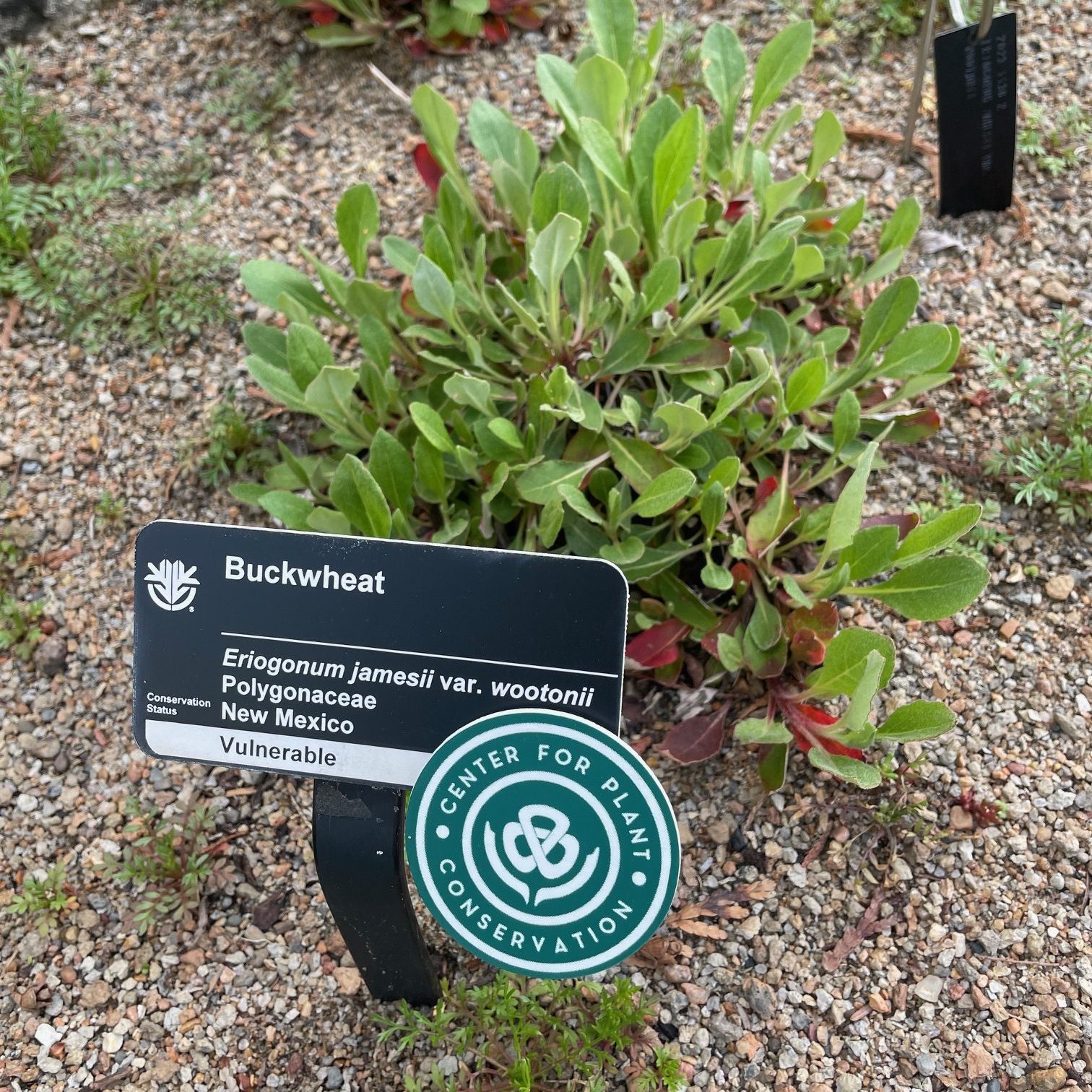
In celebration of the 2025 CPC National Meeting, Missouri Botanical Garden (MOBOT) staff created a unique and engaging activity for conference-goers—the CPC Rare Plant Scavenger Hunt. Designed to complement the event, this interactive experience also serves as an ongoing public education initiative, showcasing MOBOT’s dedication to rare plant conservation.
The scavenger hunt highlights MOBOT-stewarded rare plant species from the CPC National Collection that are on display throughout the Garden’s living collections. Using a digital map, visitors—whether on-site in St. Louis or exploring from afar—can click on garden locations to learn about rare species, view photos and accession details, and access CPC National Collection plant profiles.
This tool is more than just a fun way to engage with the Garden’s landscapes. It’s a window into the essential conservation work being done behind the scenes. MOBOT’s team cares for an extensive range of rare species in seed banks, greenhouses, a hardy plant nursery, and a micropropagation lab. The plants featured on the scavenger hunt map include those currently under study, surplus from research projects, cultivated varieties, and members of collaborative meta-collections with other institutions.
By making these rare species more visible to the public, MOBOT reinforces the critical role that botanical gardens play in plant conservation—preserving biodiversity, advancing research, and inspiring stewardship through education.
Explore the CPC Rare Plant Scavenger Hunt!
2025 National Meeting Photo Contest
Each year, the CPC National Meeting Photo Contest highlights the beauty of rare plants and inspiring work of plant conservation—and 2025 was no exception. From rare blooms to conservation teams in action, this year’s entries—submitted by conservationists across the CPC network—captured the heart and science of our collective efforts to save plants from extinction. We’re proud to showcase the three winning photos that stood out for their beauty, impact, and storytelling power. Congratulations to this year’s photo contest winners and thank you to everyone who participated!
Michael B. Thomas of the National Herbarium of Rwanda took the first place prize with his inspiring image titled, “Hope in Bloom: The Rescued Rwandan Miniature Water Lily (Nymphaea thermarum) Finds New Life.”
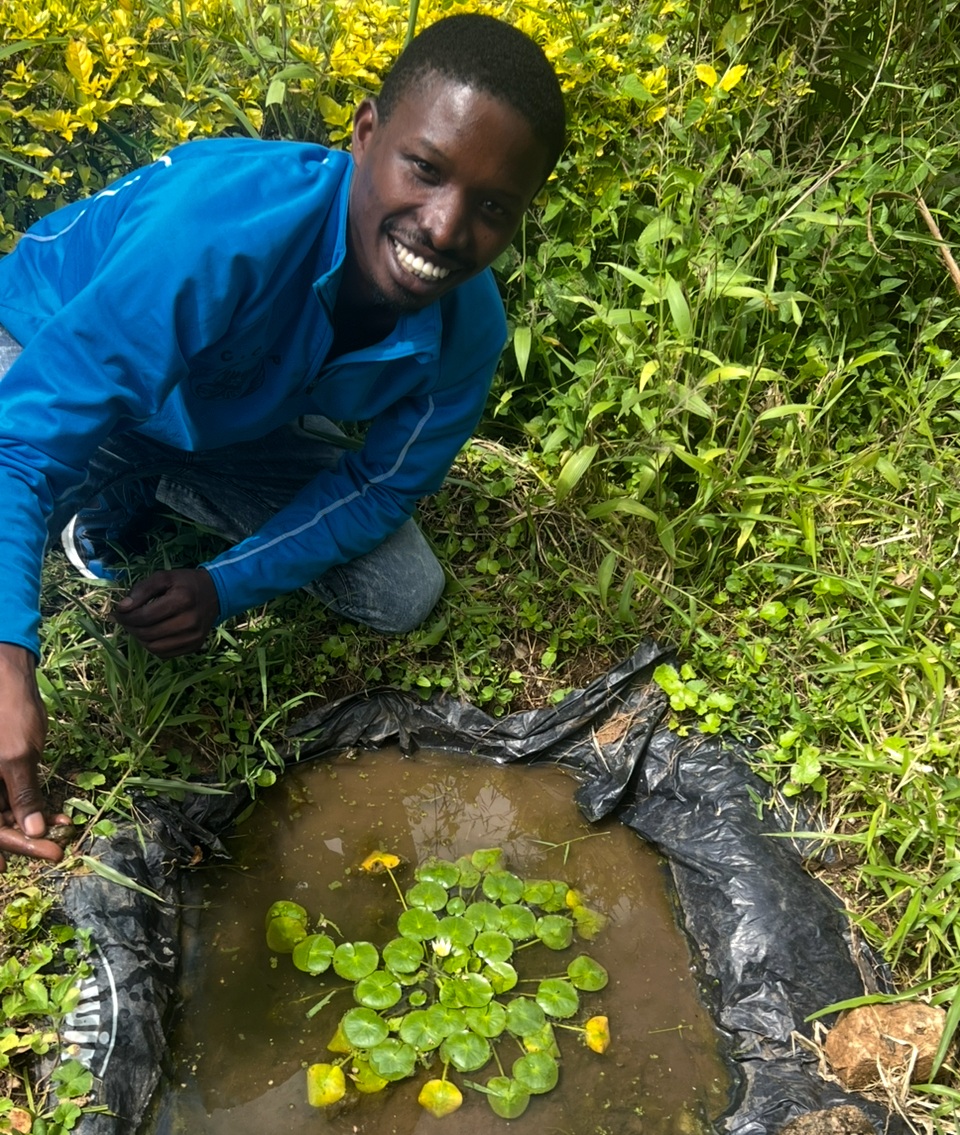
CPC’s 2023 Star Award winner, Steve Blackwell of Desert Botanical Garden, took second prize with his stunning, up-close shot of the flowers of the Ash Meadows ladies’ tresses orchid (Spiranthes infernalis).
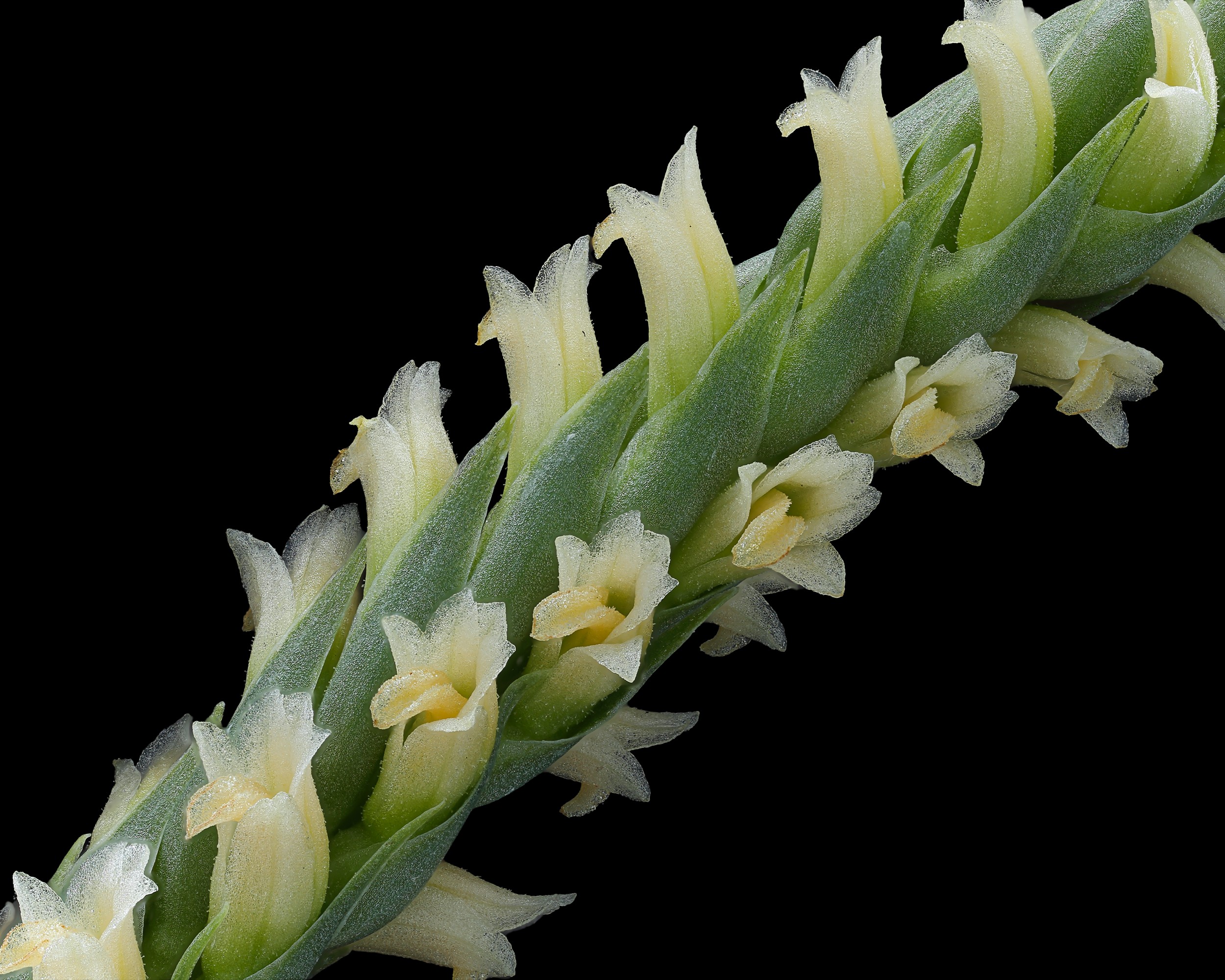
The third-place prize went to Kay Hankins of the Botanical Research Institute of Texas and the Fort Worth Botanic Garden for her striking image of Purple-spike Coralroot (Hexalectris warnockii).

View even more incredible rare plant photos on the Rare Plant Academy Photo Gallery! Featuring subjects ranging from seed banking and horticulture, to cryopreservation, reintroductions, and more, the Rare Plant Academy Photo Gallery educates, informs, and inspires those who work with, advocate for, and love plants.
Meet the 2025 Catherine H. Beattie Fellows
Each year, The Garden Club of America (GCA) and the Center for Plant Conservation together award the Catherine H. Beattie Fellowship to graduate students in biology, horticulture, or a related field. The purpose of the award is “to promote conservation of rare and endangered flora in the United States, with preference given to students whose projects focus on the endangered flora of the Carolinas and southeastern United States.”
These four selected scholars are recipients of the 2025 Catherine H. BeattieFellowship — and we are excited to share more about their innovative conservation projects!
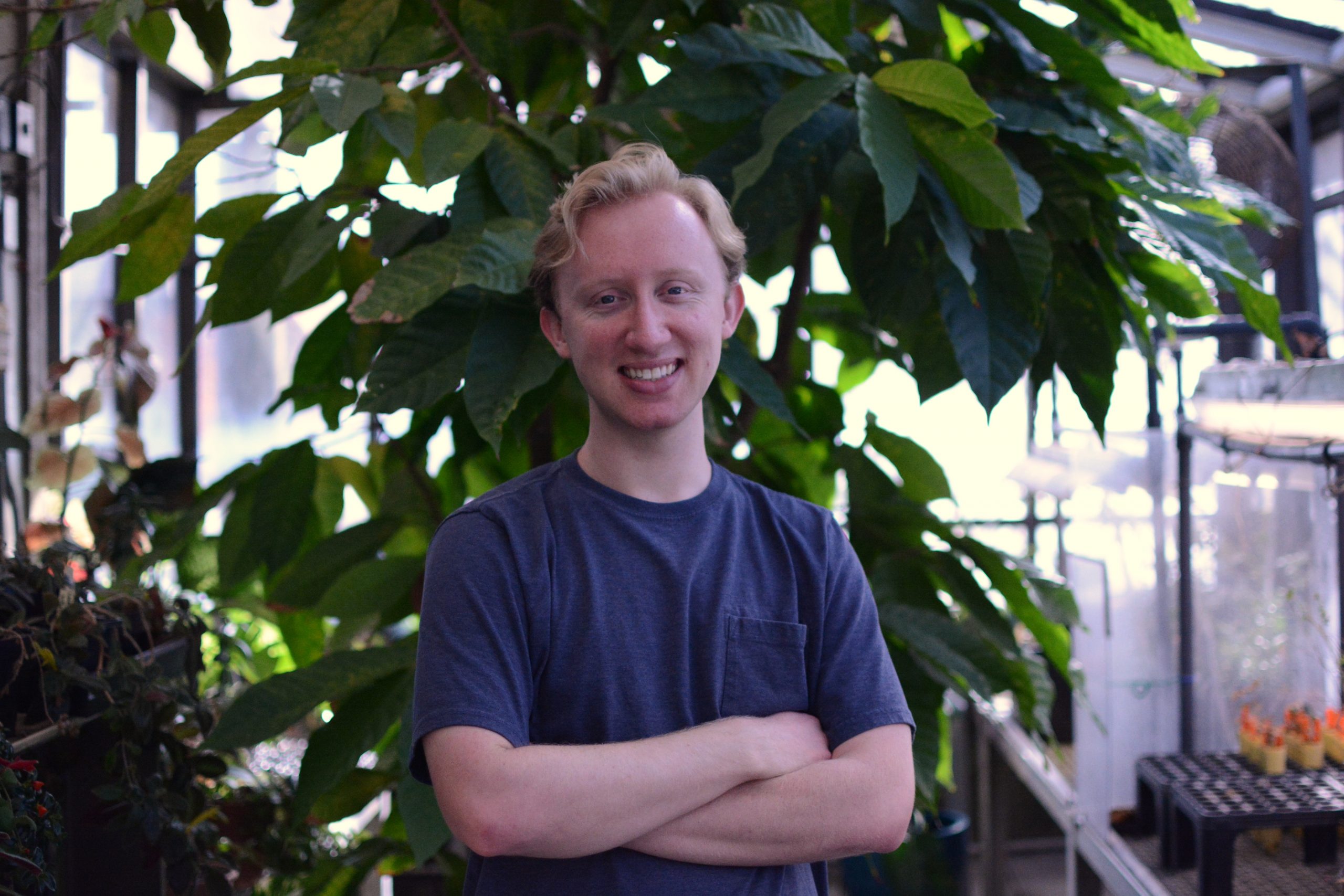
Ryan Brooks, University of Cincinnati
Project: “Assessing the Epigenetic Fidelity of Cryopreserved Oak Tissues”
This project aims to better understand the epigenetic impacts cryopreservation and tissue culture have on tissues of endangered oak species. Samples from all study species will be initiated into both tissue culture and somatic embryogenesis (which are necessary preparatory steps for cryopreservation) providing the opportunity for a direct comparison of mutation rates between the two procedures. Whole genome bisulfite sequencing will be used on samples taken at multiple points in the processes in order to determine which regions of the epigenome are changing and the severity of these changes. These results will be used to inform future diversity banking efforts and to ensure the fidelity of tissues banked in the CREW CryoBioBank.
Adam Herdman, University of Florida
Project: “Regional Scale Population Genetics of the Endangered Ghost Orchid (Dendrophylax lindenii): Sequencing of wild Populations Across Southwest Florida “
Conservation of species in decline is often a rush to gather as much information as possible before total extirpation from historic ranges. Data gathered in the remnant populations can be critical to future management and restoration of the species. Though submitted for further protection under the Endangered Species Act, many gaps in our understanding of the ghost orchid still exist. One such gap includes the population genetics of the species and the relatedness between the highly fragmented and remote populations. Successful reproduction has not been observed within reintroduced ghost orchid populations, despite annual monitoring, suggesting inbreeding may be a factor. In this study, we will sample 138 ghost orchid roots from around the Southwest Florida region. We will sample two robust populations for internal genetic similarity, one reintroduced population, and five other more remote sites of varying sizes and distances. Pairing this information with existing demographic data will help to characterize the past and present status of the populations.
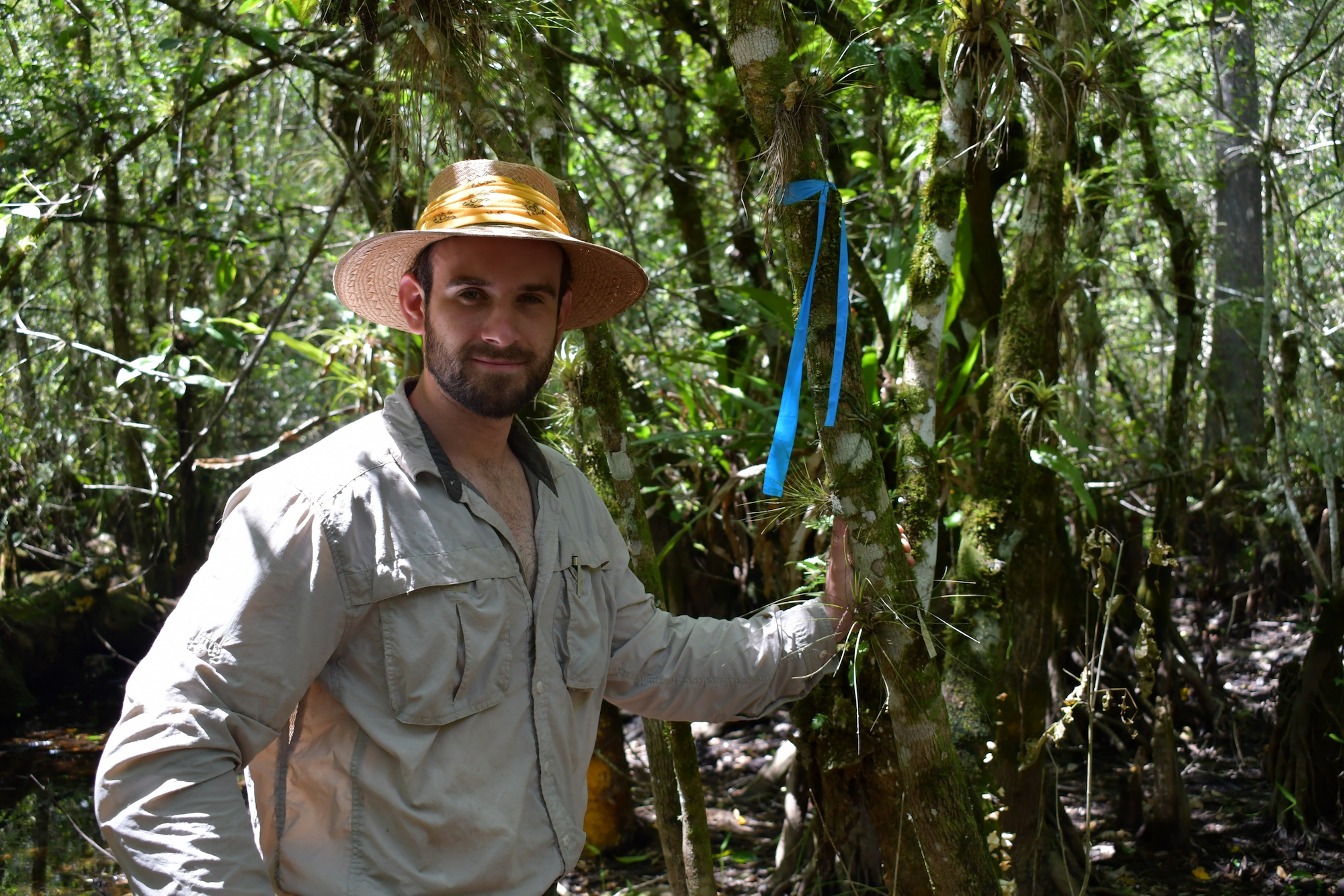
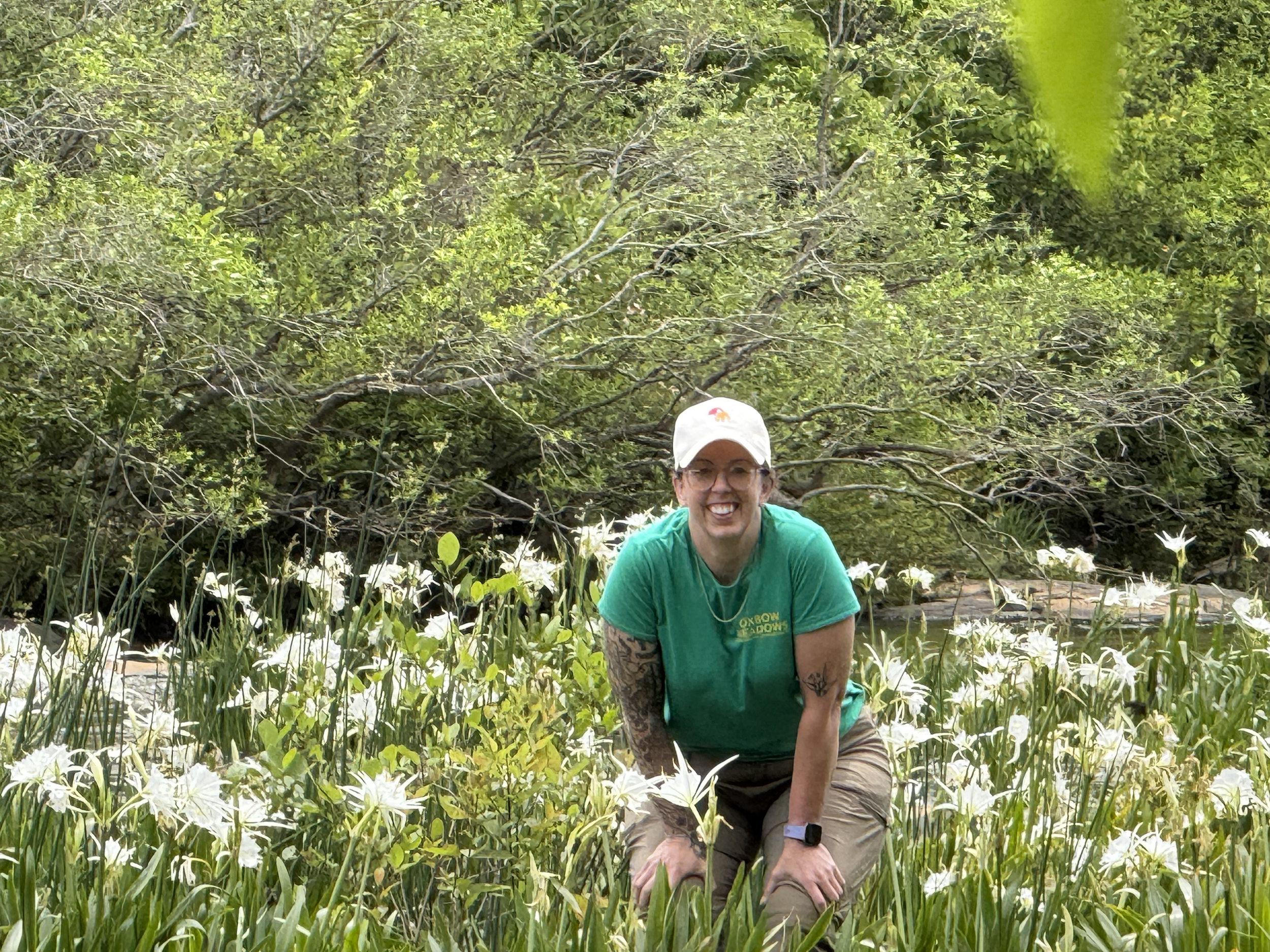
Sarah Tash, Auburn University
Project: “Assessing the Influence of Drought Duration on Seed Germination of the Endangered Spider Shoal Lily (Hymenocallis coronaria): A Controlled Study”
This project will focus on the effect of drought on seed germination and root establishment of the endemic endangered spider shoal lily (Hymenocallis coronaria). This will be conducted through a controlled study, utilizing elevation in a replicated riverbed environment to test if new seedling exposure to drought during germination alters root biomass and establishment for H. coronaria. We hypothesize that new seeds exposed to longer periods of drought due to higher elevation within the riverbed will produce root systems of less biomass and length then seeds exposed to normal water levels. Seeds of lower root biomass and length may be less likely to find establishment within their habitats, making them at risk for becoming displaced to deeper sections of rivers, where conditions are detrimental to survival. This study will provide critical information for timing and site selection of restoration efforts across the entire habitat of the species.
Niall Whalen, Florida State University
Project: “Investigating Silica Depositional Capacity in the Critically Endangered Florida Torreya (Torreya taxifolia) and its Relevance for Plant Health”
The Florida Torreya (Torreya taxifolia) is one of the most endangered trees in the world, thought to be principally threatened by an infectious species of fungus. A potential treatment lies with phytoliths, microscopic deposits of silica produced by plants. When they form between cells, phytoliths inhibit disease progression by acting as barriers to pathogens. Florida Torreya in the wild produce few phytoliths—if they were to produce more, the tree might successfully fight off its devastating fungal infections. In partnership with the Atlanta Botanical Garden, this project examines phytolith depositional capacity in the Florida Torreya by growing them in soils with added silicon; measuring phytolith abundance after growth will reveal whether low-phytolith accumulation in Florida Torreya is due to a physiological tendency to exclude silicon or simply a lack of bioavailable silicon in its environment—insights with great relevance in assessing the potential of silicon as a promising therapeutic avenue to protect and restore fungally-infected Florida Torreya.
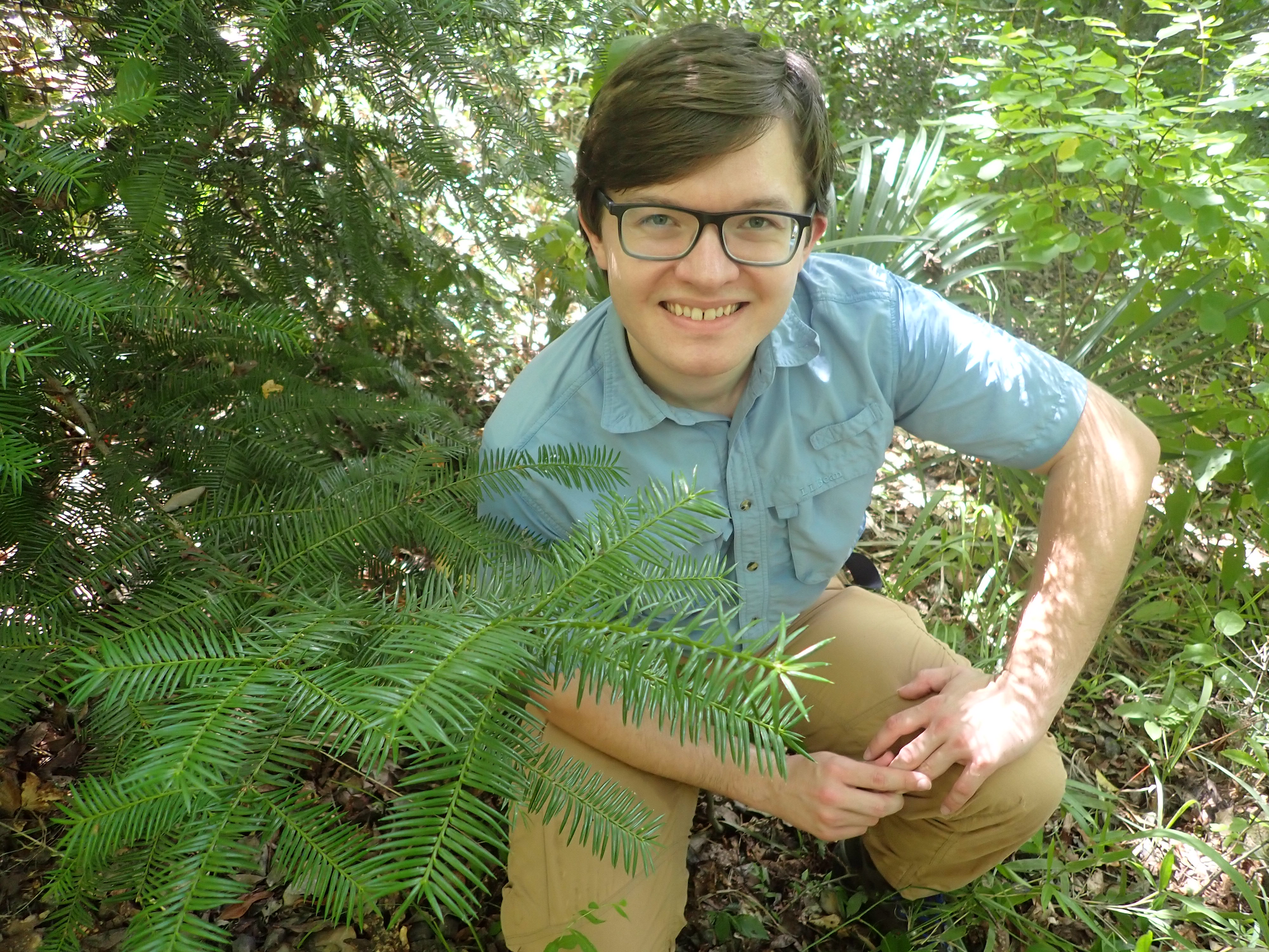
National Collection Spotlight: Pale Blue-Eyed-Grass

As Seen on RPA: Dormant Buds for Long-term Preservation
In Module VI of CPC’s Applied Plant Conservation Course (APCC), you’ll find a comprehensive overview on planning a conservation seed collection, including field collection, cleaning & drying seeds, storage conditions and equipment, and germination trials. You’ll learn why we conduct germination tests for seed collections, how to set up a long-term testing schedule, and how to determine the sample size for these tests.
In this Rare Plant Academy case study video on Dormant Buds, you’ll learn about temperate woody plants naturally forming buds that enter a state of dormancy in the winter months. For genebanks preserving clonal material, it is advantageous to cryopreserve tissue in this state. Learn more about the benefits and limitations to this approach, and how this process is used to preserve the genetic material of cherry trees and similar plants at the USDA National Laboratory for Genetic Resources Preservation.
Conservation Training and Funding Opportunities
2025 North American Fruit and Nut Tree Crop Wild Relative Conservation Partnership Awards Application
_________________________________________________________________
Conservation Course Offerings from Kew
The Millennium Seed Bank Partnership (MSBP) at Royal Botanic Gardens Kew, a longtime Conservation Partner of CPC, is the world’s largest underground seed bank and conservation resource for diverse wild plant species, and home to over 2.4 billion seeds, representing over 39,000 different species of the world’s storable seeds. The MSBP provides training, technical support and information, to ensure that MSBP partners and collaborators have the skills, facilities and knowledge needed to successfully conserve seeds to a high standard and meet critical global seed conservation targets. Read on for information about upcoming training opportunities from leading experts on plant cryopreservation and seed conservation techniques.

- Plant Cryopreservation – Theory and Practice: Delivered by Kew’s scientists and guest lecturers who are specialists in cryopreservation and plant conservation, this course provides an opportunity to learn the theoretical basis and gain hands-on experience of the application of cryopreservation approaches for the ex situ conservation of plants. The application deadline is August 15, 2025. Learn more.
- Seed Conservation Techniques: Using the MSBP’s agreed Seed Conservation Standards as a basis, this fully online two-week course will provide participants with training in collecting, processing, drying, storage, moisture content assessment and germination testing of seeds of wild species. It will include a theoretical background of seed moisture relations, seed storage behaviour, germination and dormancy, prediction of seed storage life, and theoretical and practical aspects of seed bank management and design. The application deadline is end of July 2025. Learn more.
Get Updates
Get the latest news and conservation highlights from the CPC network by signing up for our newsletters.
Sign Up Today!Ways to Help CPC

Conservation Advocacy Initiatives

Donate to Save Endangered Plants
Without plants, life as we know it would not be possible. Yet two in five of the world’s plants are at risk of extinction. More than ever before, rare plants need our help!
When you support the Center for Plant Conservation (CPC) by making a charitable gift, you help advance our mission to safeguard rare plants by advancing science-based conservation practices, connecting and empowering plant conservationists, and inspiring all to protect biodiversity for future generations.
Your donation makes it possible for CPC to offer educational resources that support and train our botanical community, advance science-based conservation research, maintain the National Collection of Rare and Endangered Plants, and so much more.
The Center For Plant Conservation is a 501 (c) (3) non-profit organization (EIN# 22-2527116). Your gift to the Center for Plant Conservation is 100% tax deductible.
Your gift ensures CPC’s meaningful conservation work will continue. Together, we save more plants than would ever be possible alone—ensuring that both plants and people thrive for generations to come. We are very thankful to for all that you do to help us Save Plants!
Donate to CPC
Thank you for helping us save plant species facing extinction by making your gift to CPC through our secure donation portal!
Donate Today